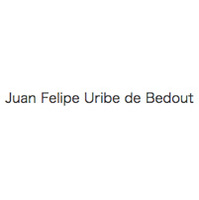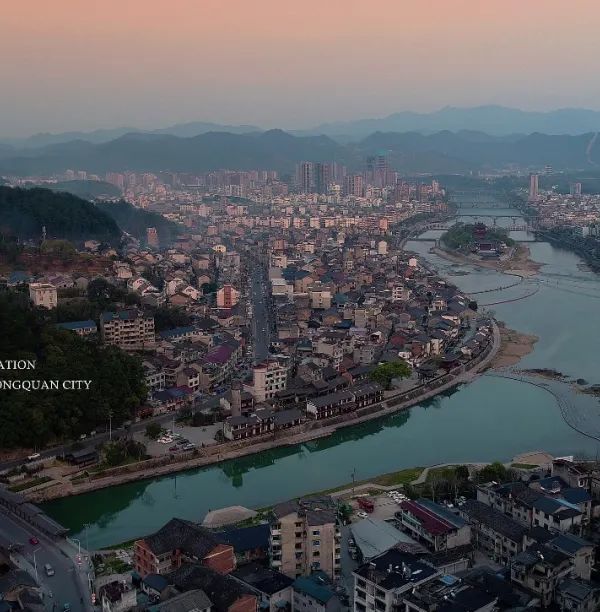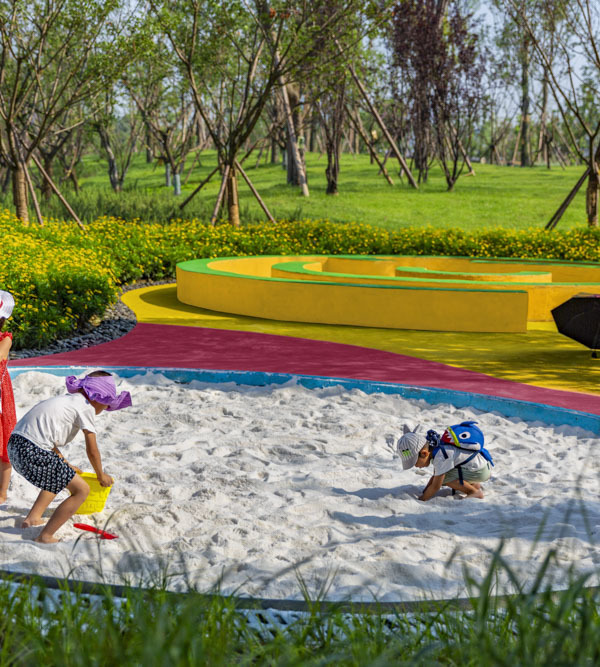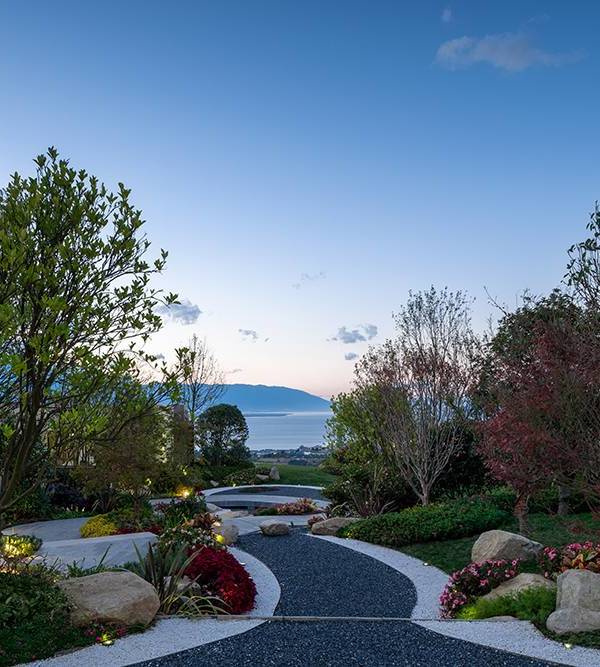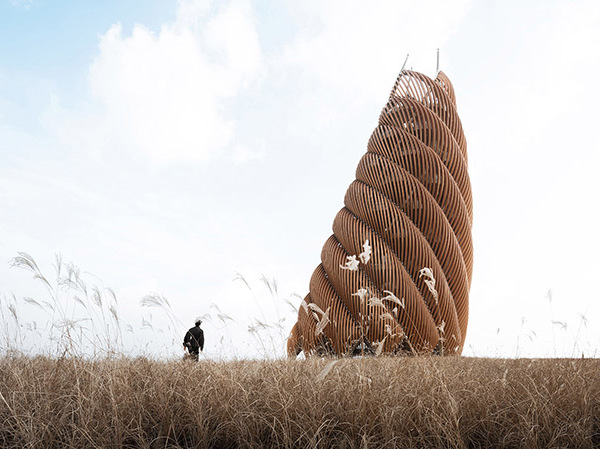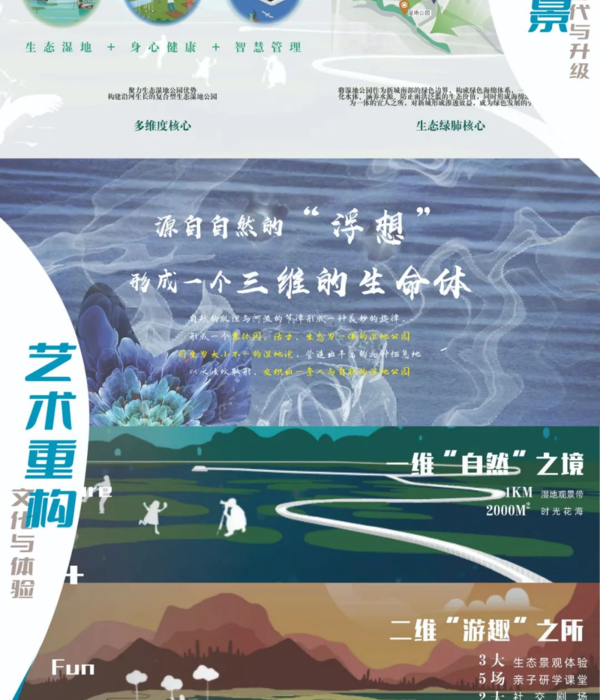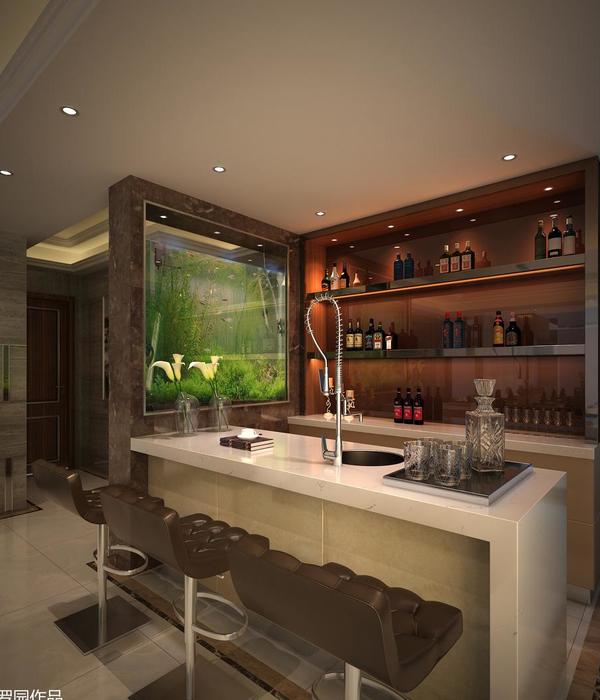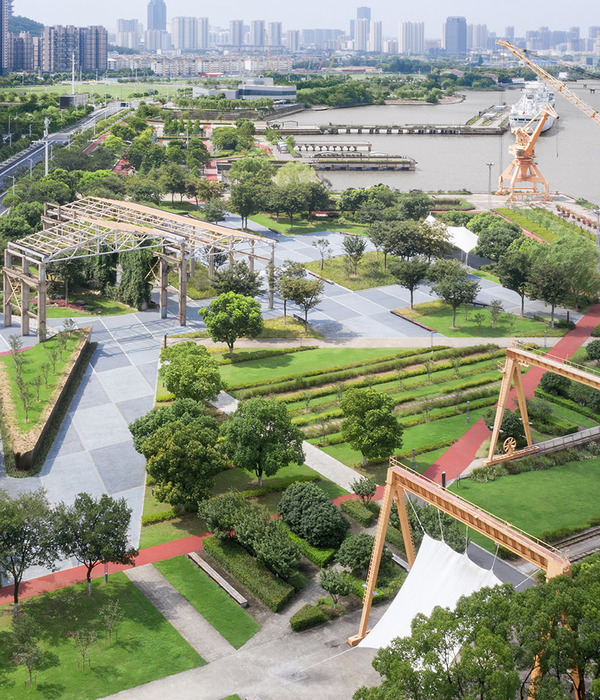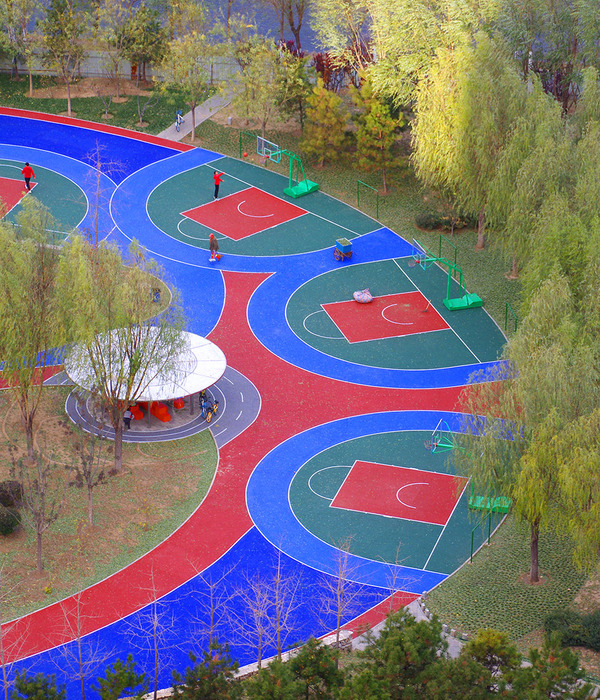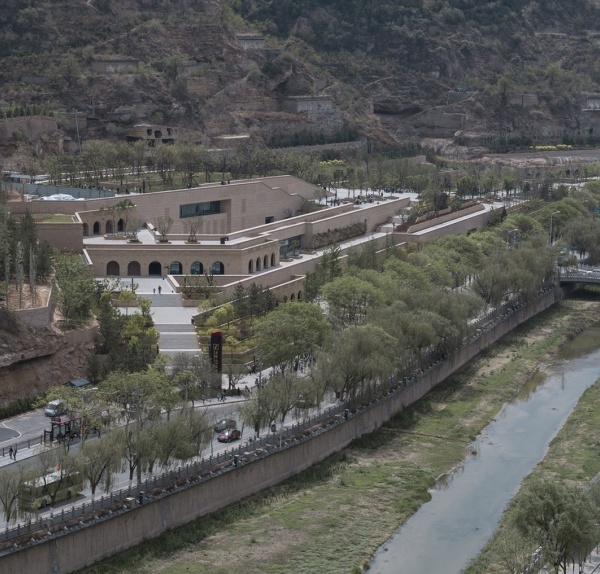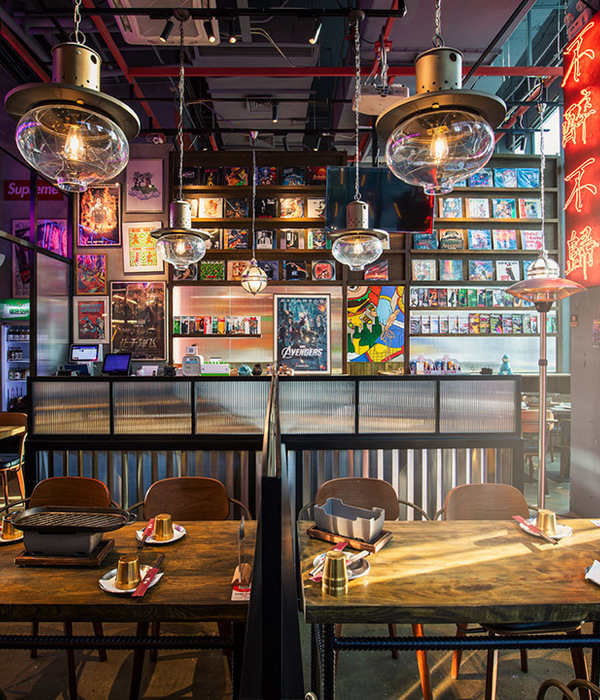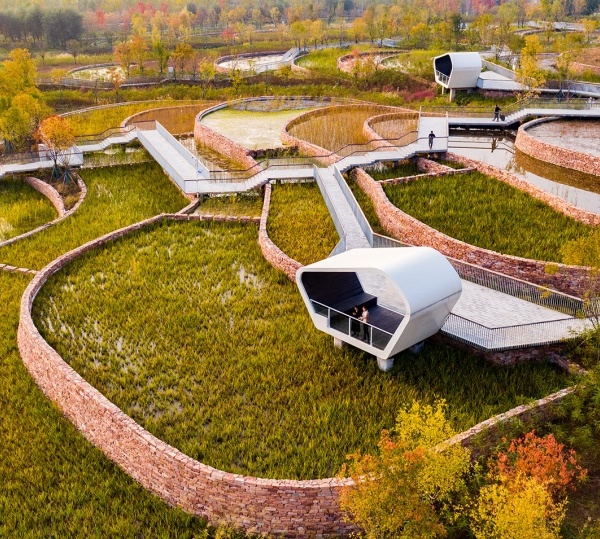哥伦比亚森林公园 | 绿色创新与文化遗产的融合
来自
Juan Felipe Uribe de Bedout
尽管创造这些公园的基本原理和基本途径是一种愉快的物理和文化体验,但却少有人明白其中隐含的生态、运作和规划的意味。然而,今天这些问题已经变得越来越重要。毕竟,宏观公园并不是一处简单的自然区域,而是需要计划、需要建设、需要培育和设计的,因此也就受制于几何学、材料和组织方面的发明创造。

For the public in general, large – scale, or macro, parks evoke visceral images of larges of open green space, full of forests, wetlands, lakes, meadows, streams, bridges, paths and promenades on a scale that allows the dramatic exposition to the climate, geology, dense vegetation and open horizons. While extensive macro – parks are landscapes that are integrated into metropolitan areas, providing pleasant, diverse and complex spaces, it is not necessary that these parks have to simulate rural pastoral scenes, nor register with the formality of fine arts with their axes and perspectives. These large experimental reserves should be open – air theaters of nature, scenarios for the performance of natural time, the social use and the event. And they must provide a rich array of social interactions and activities that solidify the notion of belonging, of community or citizenship. All of this is revealed in a wandering body, in sequences alternating between spaces of isolation and lookouts of getaways and open perspectives, an open framework of social spaces, some small and intimate, some large, monumental and collective.
The macro – parks, while providing a pleasant use of the open space and serve as cultural experiments, should present other challenges. Operating and maintenance costs require contingency strategies for moments of weak finances, as they are the first to suffer budget cuts; moreover, because they have to be prepared for a permanent adaptation or reinvention.
Although the rationale and fundamental approach to the creation of these parks is a pleasant physical and cultural experience, the ecological, operational and programming aspects are less obvious and less understood. However, today these issues have become more important. After all, macro – parks are not simple natural areas but are planned, constructed, cultivated and designed and are, therefore, subject to geometric, material and organizational inventions.

今天,在设计宏观公园时遭遇的重大问题之一就是比例问题,预先设定的形式总会在意义和内容方面受到开放过程的影响。宏观公园不是只由一个人讲诉的故事,它的发展总是超过原创设计师的期望,总是会围绕着不可预知的因素发展。它们是复杂的动态系统,因此,设计师只能渴求规定一个大概的物理基础,而随后的发展过程和形成则更加的开放。随着时间的发展和重大交互是否会创造出差异性,依据的是人们对这个物理基础或层状网络的理解。一个有用的诀窍是设计一个框架、模型和目录,使得公园的结构能够在统一的框架下,灵活调整,迎合未来的纲领性和环境要求。
COMFAMA原子核宏观公园的面积受到两个敏感因素的影响:相当保守的生态保护状态和预先存在的还未被调查与研究的考古遗址。这些条件不可避免地需要几组专家积极参与协商,达成概念上的一致。这些预先存在的条件要求制定高度灵活的项目策略,可以为一般的调节或总体规划和特定场址的实施提供几个可选的选项。
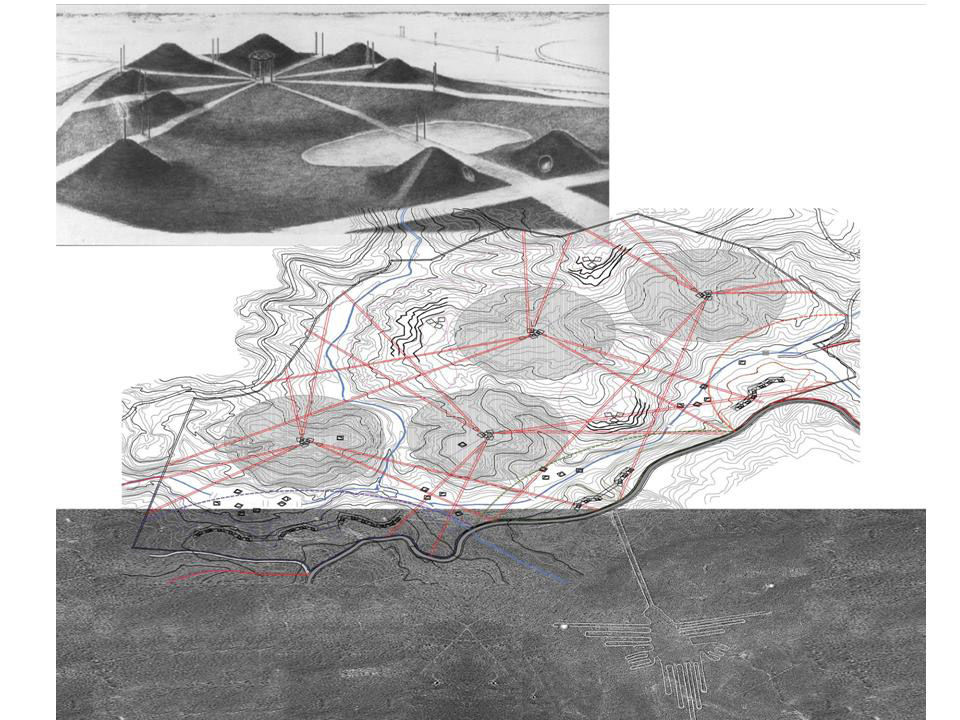
Today, one of the big questions in the design of macro – parks is the proportion in which the pre – established forms interact with open processes in relation to the meaning and content.
The macro – parks will always exceed singular narratives, will always surpass the desire of authorship of designers and will evolve around unpredictable aspects. They are complex, dynamic systems and, as such, designers can aspire to establish a highly specified schematic physical basis in which the more open processes and formations can take root. The diversity of growth and significant interactivity that can be supported through time depends on the understanding of this foundation basis, or layer net. The trick is to design a framework, a matrix and a catalogue that will allow the park structures to absorb future programmatic and environmental requirements under an identity that enables great flexibility.
The area of the COMFAMA Nucleus macro – park is affected by two factors of great sensitivity: a condition of rather – conservative ecological protection and a pre – existence of archaeological sites not yet surveyed and studied. These conditions require the active, definite participation of several groups of specialists that will inevitably involve processes of negotiation and conceptual consensus.
These pre – existing conditions demand a highly flexible project strategy that allows several options of general accommodation or the master plan and the implementation of specific sites.
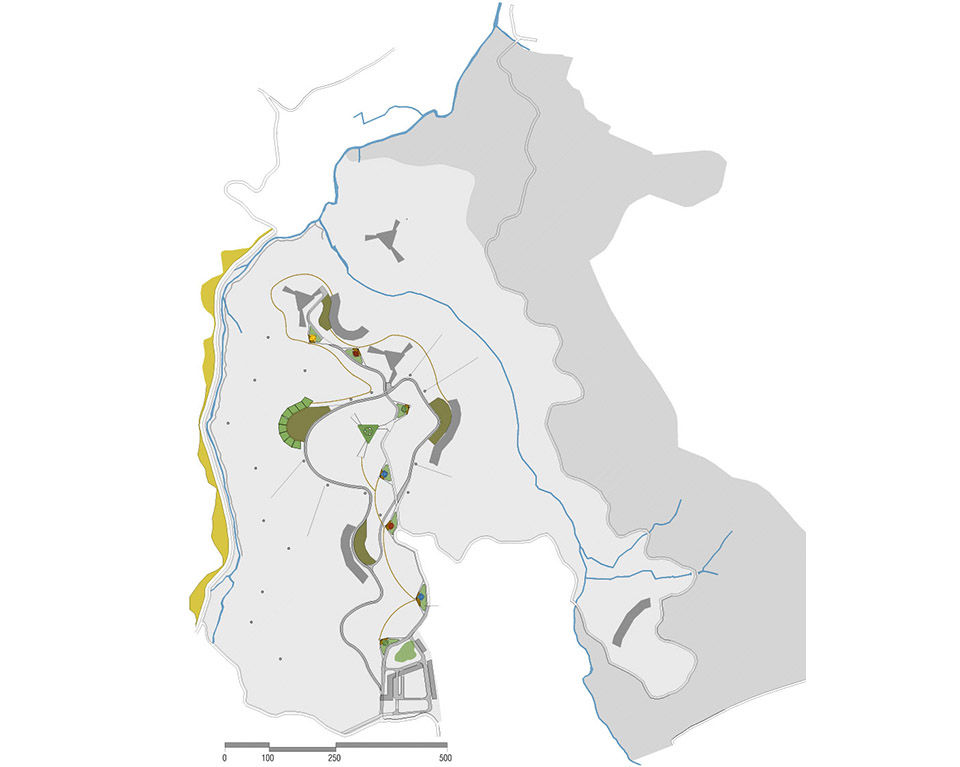
最终确定选择一个排除了严格的物理预想的设计策略,因为事先的物理设想会妨碍不同的专家对设计、建设和实施过程的干预。这个设计策略必须将保留好每个具体位置上的生态和考古发现。基于这个原因,一个“棋子”系统被创造出来,其中,把宏观公园的领土范围比拟为一个棋盘,当变量出现时,允许执行一系列的动作或是策略举措。
这些棋子应该避免由于各路专业或管理团队的介入而导致的公园性质的任何曲解。
这个由多个精密的部分组成的开放的系统给予这个项目某种程度的对抗死板的主观性的免疫力,同时使得能够由预先存在的条件诱导出具有一定随意性的多重结构。这些背景条件积极地与建筑设计铺垫彼此交互。
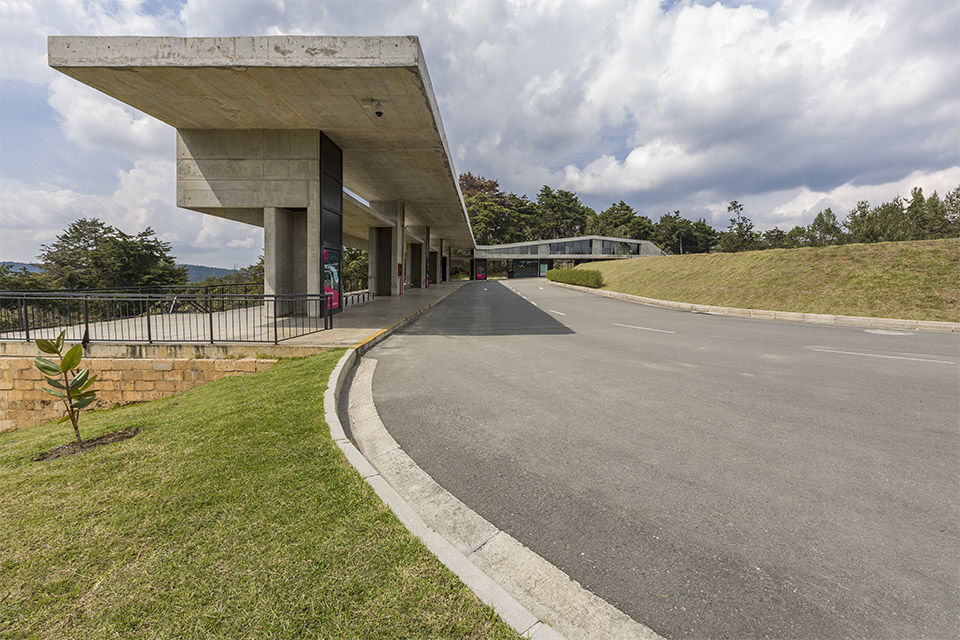

It was decided to opt for a design strategy that ruled out a rigorous physical prefiguring because it would hamper the intervention of the different specialists during the design, construction and implementation process. It needed to be a strategy that would save the ecological and archaeological findings in each specific location. For this reason, a system of “chess pieces” was created to understand the territory as a large game board and allow the execution of a series of movements or strategic moves as the variables appeared.
These pieces should avoid any distortion of the nature of the park caused by the intervention of the different professionals or administrative teams.
This open system of precise parts gives the project a kind of immunization against a formalist subjectivity and simultaneously enables multiple configurations with a degree of arbitrariness, induced by the pre – existing conditions. The conditions of the context interact actively with the architectural foreshadowing.

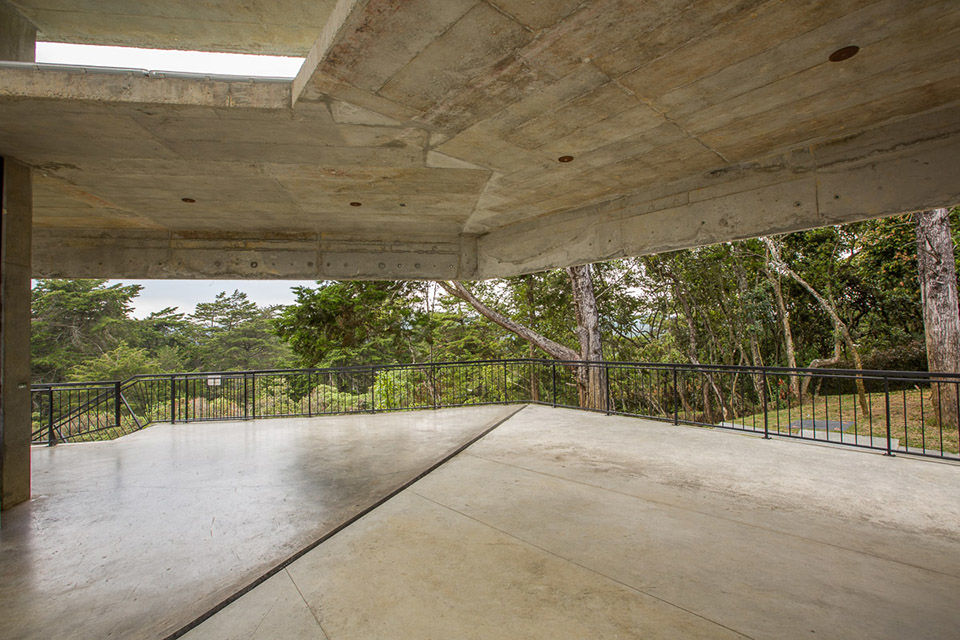
棋盘游戏无疑是达成协议的最好的机制,在这个机制中,由精确的规则、指令和方法引导差异。而对于公园,协议在三个要点下制定:1-人类学:强调对历史文物的纪念和尊敬,考虑公园是否接近本土墓地和矿藏,是否会侵害到花卉种植的传统;2-技术:促进环境教育,提高对自然资源的合理利用,为普遍应用发展技术模型,以帮助建设可持续性建筑以及研究和发展光合作用绿色屋顶3-艺术:经营一个大规模的大地艺术作品,其中,整个的领土被看作是一幅巨大的帆布或是一个表演空间。将其作为庄严搜索的参照,比如秘鲁的纳斯卡航线,寻找从空中欣赏的新的地形:更具天体演化性的观点内的地铁电缆、航空和自然守望者。

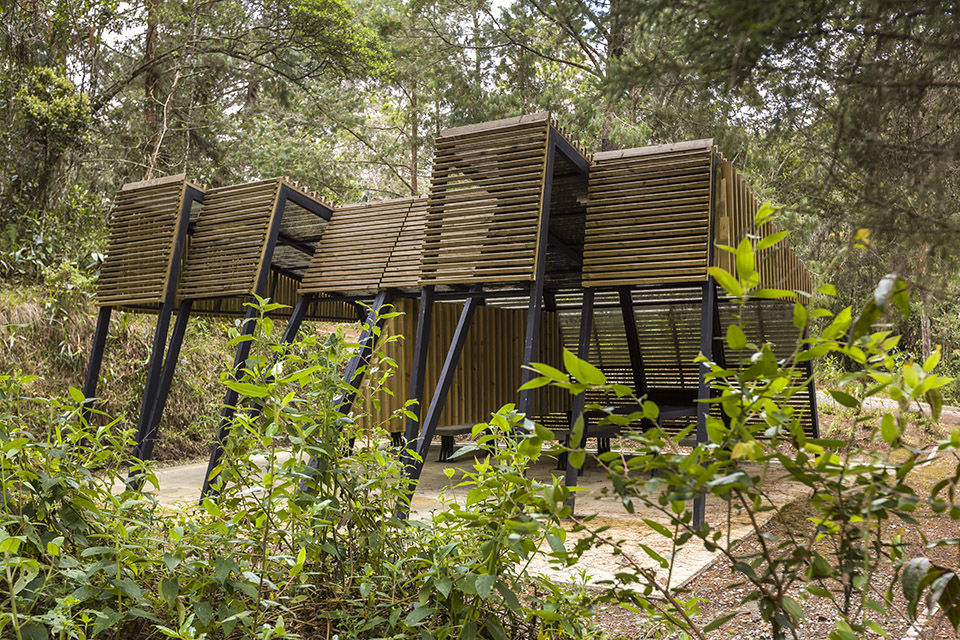
The game is par excellence the best mechanism for agreement, in which the differences are channeled by the precise rules, instructions and approaches. In the case of the park, the agreements are framed within three main emphases:1 – Anthropology:to highlight the memory and respect for historical relics, considering the proximity to indigenous cemeteries, mining, and the tradition of growing flowers;2 – Technology:to promote environmental education and good use of natural resources, developing technological models for universal application as a contribution to sustainable architecture and implementing research and development and photosynthetic green roofs;3 – Artistic:To run a large – scale work of Land Art, where the entire territory is seen as a large canvas or performance space, having as reference sublime searches such as the Nazca lines in Peru, finding a new landscape to be appreciated from the air: Metrocable, aviation and natural lookouts within a more cosmogonic view.

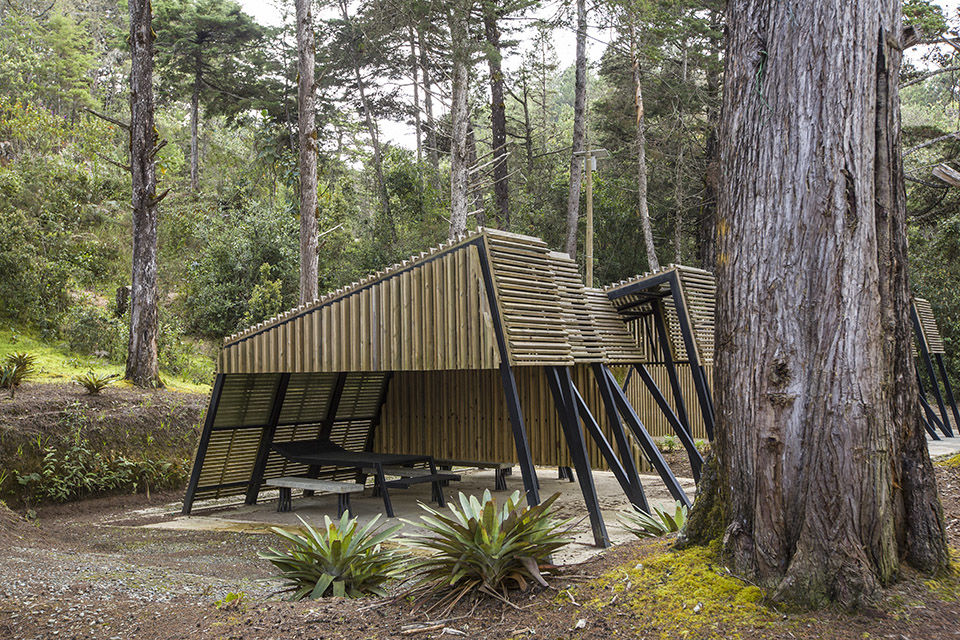
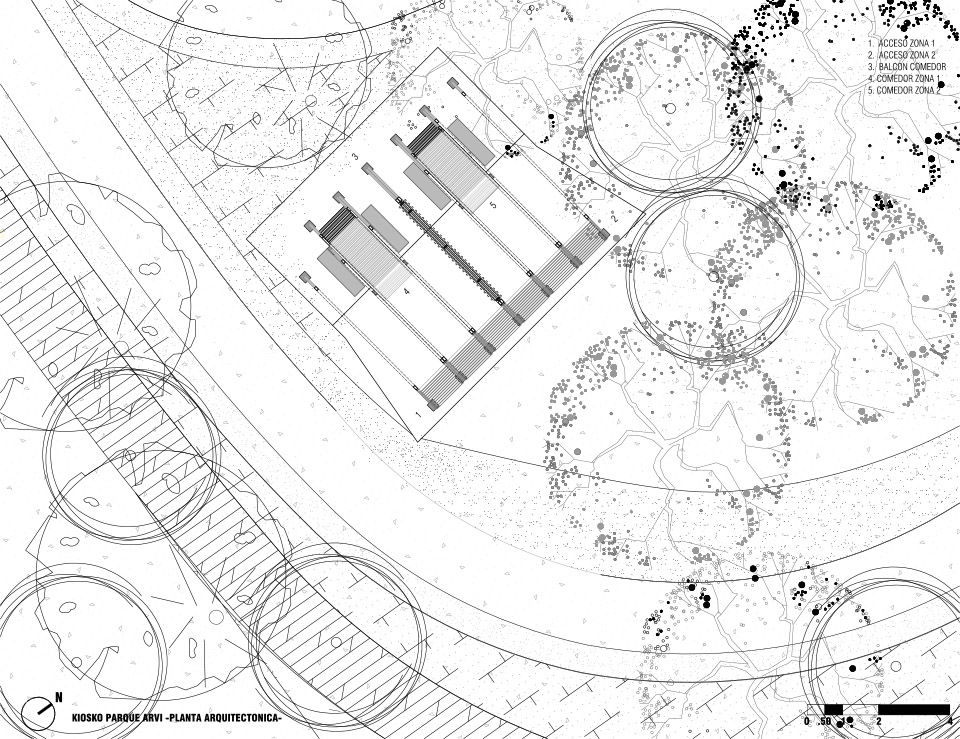
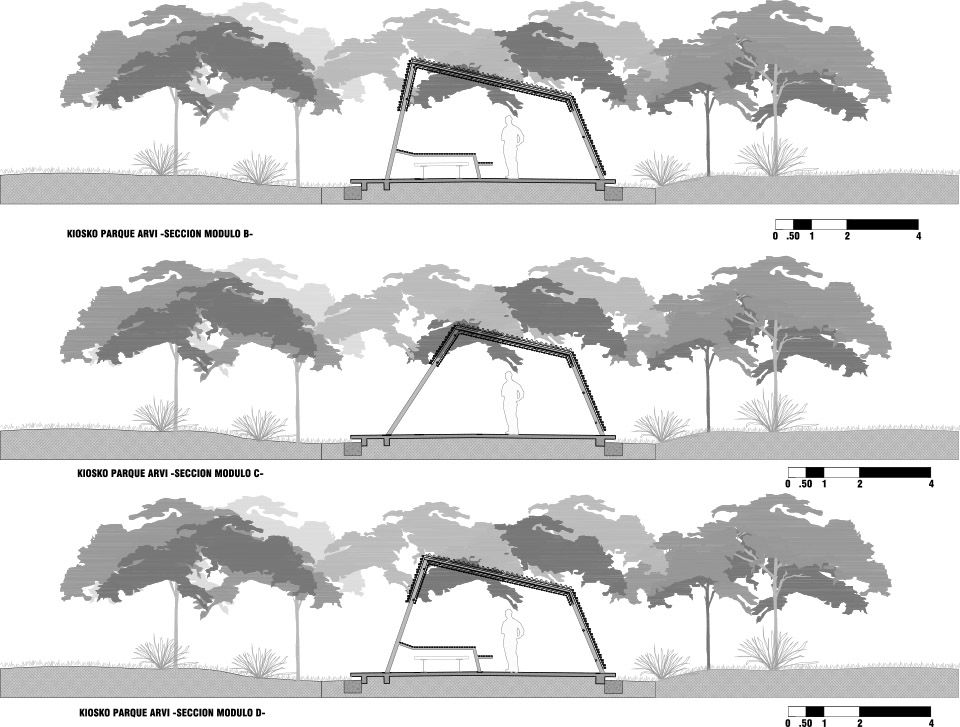
定义了三个关键点:
To populate the park, three key tokens or pieces were defined:
Silletas伴护着通往公园的人行道。Silleta建筑的倾斜的屋顶花园接收参观者,为他们指示提供基本服务的位置。建筑的几何结构开始于一个向一端倾斜、边长为12米的四方形;一些边上下降了两个坡道,通过减少灵活性,促进游客的进入。它的轻量级的金属结构允许它包含一个内部的结晶区域,保证了屋顶花园和室内的自然采光。
颜色照下了这些结构的阴影,使得用户可以辨认出Silleta的类型。为了实现这一点,依据特殊的用途,建立起了7个内部分区:洗手间、医务室、教室、自助餐厅、询问处、通讯室和导游中心。
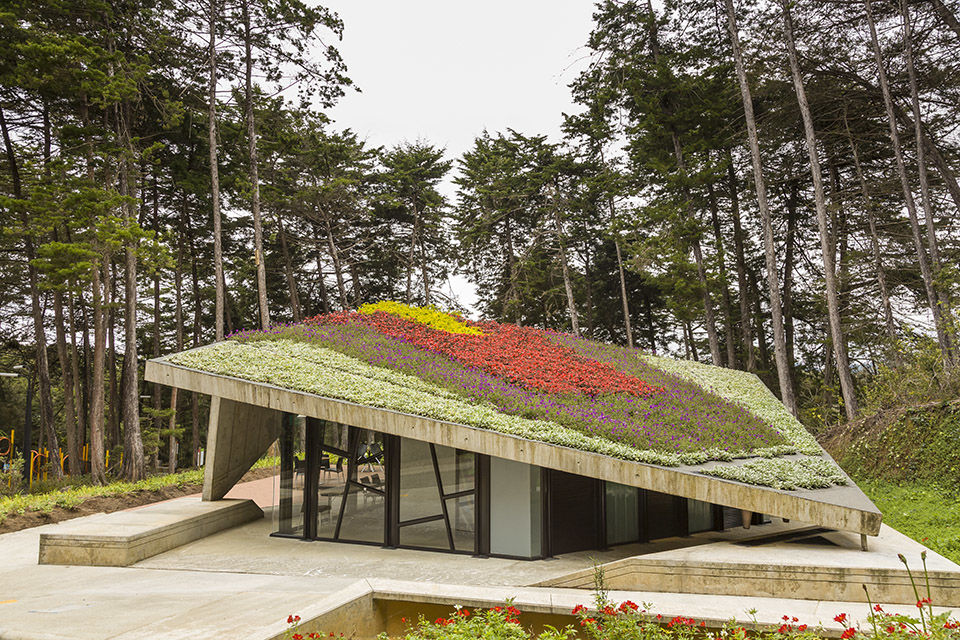
SILLETA提供了地表来种植花卉,基于参与式设计,以当代人的视角继续该区域的种植传统。在这个参与式的设计中,来自全球各地的艺术家汇聚在一起,年轻的一代也通过数字摄影和软件程序上塑性研究的发展,参与了设计过程。这些构成保障了基本的服务计划的实施,比如:信息传递、集体训练、环境卫生、营养和水合作用站、急救等。这个容器将总是保持不变,只有内部的建筑会出现变化。这个部件将会具有交替式功能,比如萤火虫会在夜里为行人指示主路径的方向。这种大版式的灯将不会对栽培的土表施加过多的重量。
这些silleta将会在主路径的两边,彼此相距大约150米而放置。步行者将能够从这些观景窗欣赏耕作的土表,因为silletas的高度较低。
这些silleta只有从道路的连接辅路径的另一边望过去才清晰可见。因为所处的位置,它们将可以暂时为行人提供半路上的歇脚点。仰视这些silleta,会发现它们如同彗星一样,正准备起飞。它们外表轻盈,让人读出家具特有的暂时与灵活的意味。
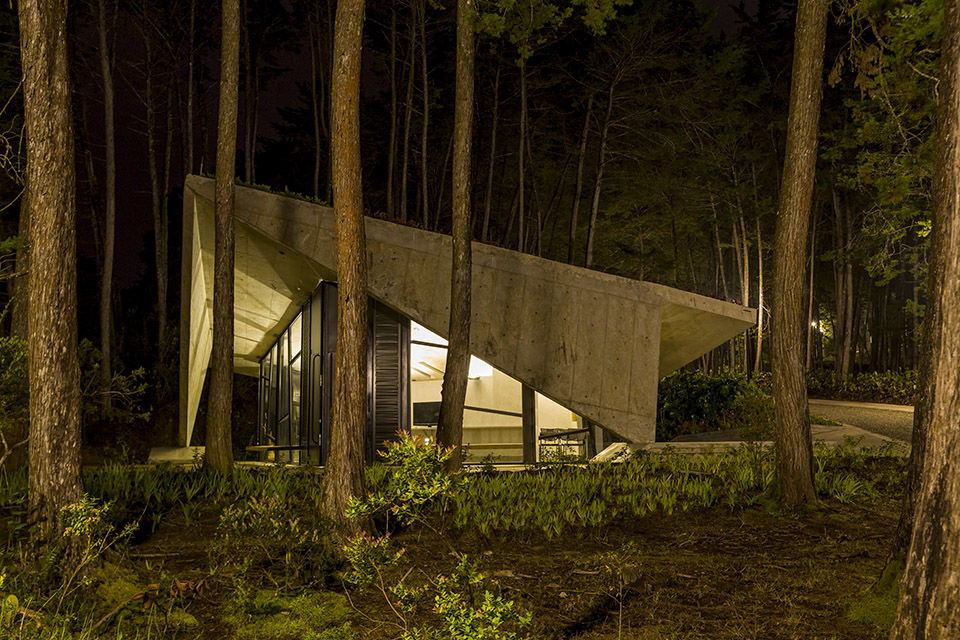
The Silletas accompany the footpath leading into the park.
The sloping roof garden of the Silleta buildings receives visitors and indicates where the spaces for basic services are located.
The geometry of the building begins with a square, 12 meters on each side, which is inclined on one end; access is made by descending two ramps on the sides that facilitate entry by those with reduced mobility.
Its lightweight metallic structure allows it to contain an internal crystallized area that ensures natural lighting in both the roof garden as well as the interior.
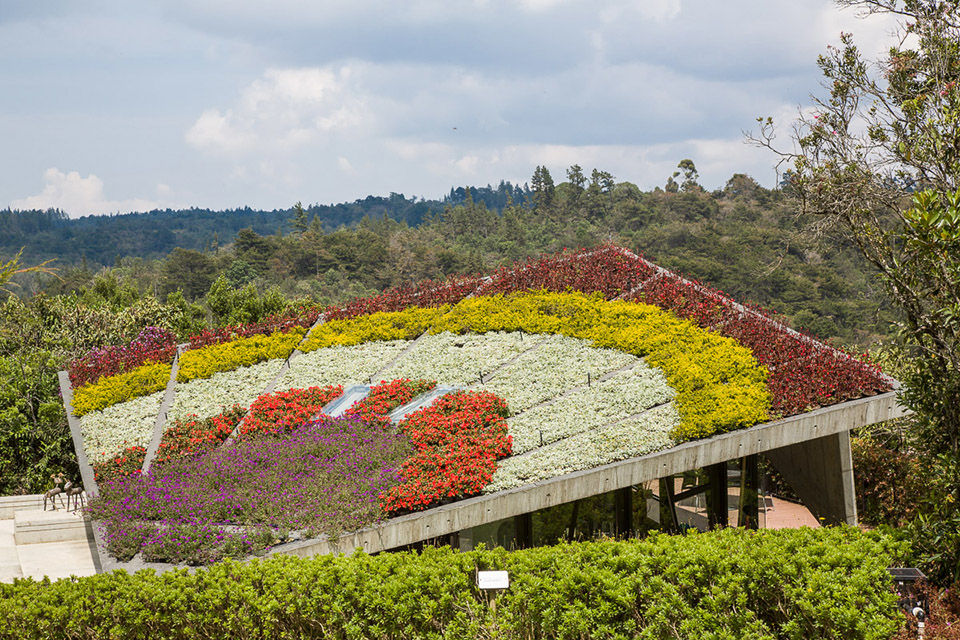
The color appears to shade the spaces, allowing the user to identify the type of Silleta. To do this, seven internal distributions were established, according to the same number of specific uses: restrooms, infirmary, classrooms, cafeteria, information booth, communication rooms and tour guide center.
which provides the cover for the cultivation of flowers and continues the tradition of the area with a contemporary perspective, based on a participatory design that allows the coming together of artists from around the world and that leads to the participation of younger generations through digital photography and the development of plastics research through software programs. These structures are responsible for safeguarding the basic – service programs such as: information, group training, sanitation, nutrition and hydration stations, first aid, etc. The container will always remain the same and only the internal architecture will present variations. This piece will have alternating functions, such as fireflies in the night that guide walkers along the main paths. This condition of large – format lamp will produce an effect of weightlessness on the cultivated surface.
The silletas are arranged at an approximate distance of 150 meters between each and will be placed on the sides of main roads. From these routes the walkers will be able to appreciate the cultivated surfaces, since the silletas are at lower elevations.
The program will be evident only from the opposite side of the road, from which the secondary paths are approached. Because of its location it will have a function of temporary stations and shelters. Appreciated from lower angles, the structures take on an aspect of comets ready to initiate a takeoff. This apparent lightness gives them a reading of temporality or mobility proper to furniture.
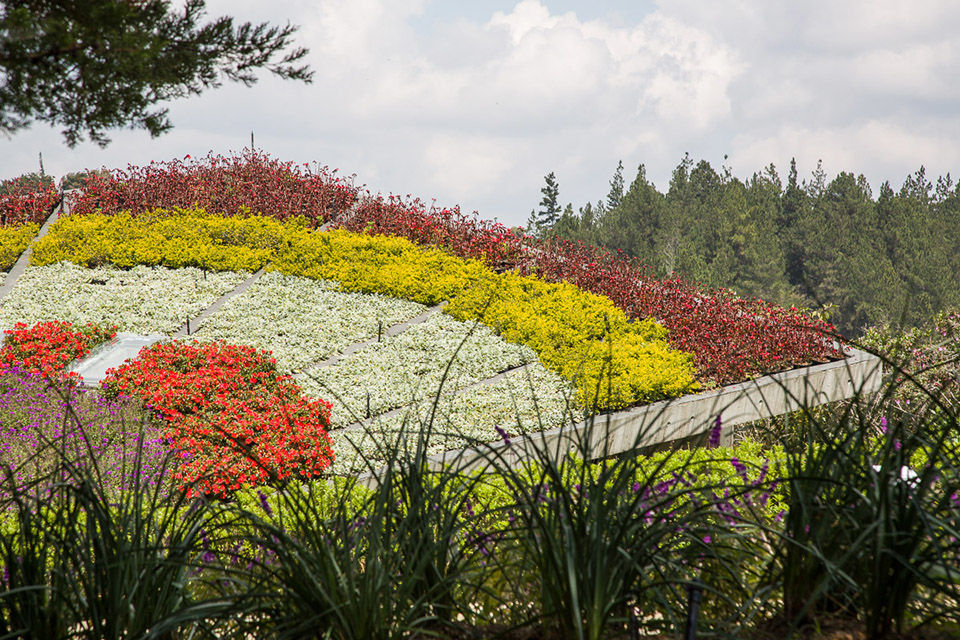

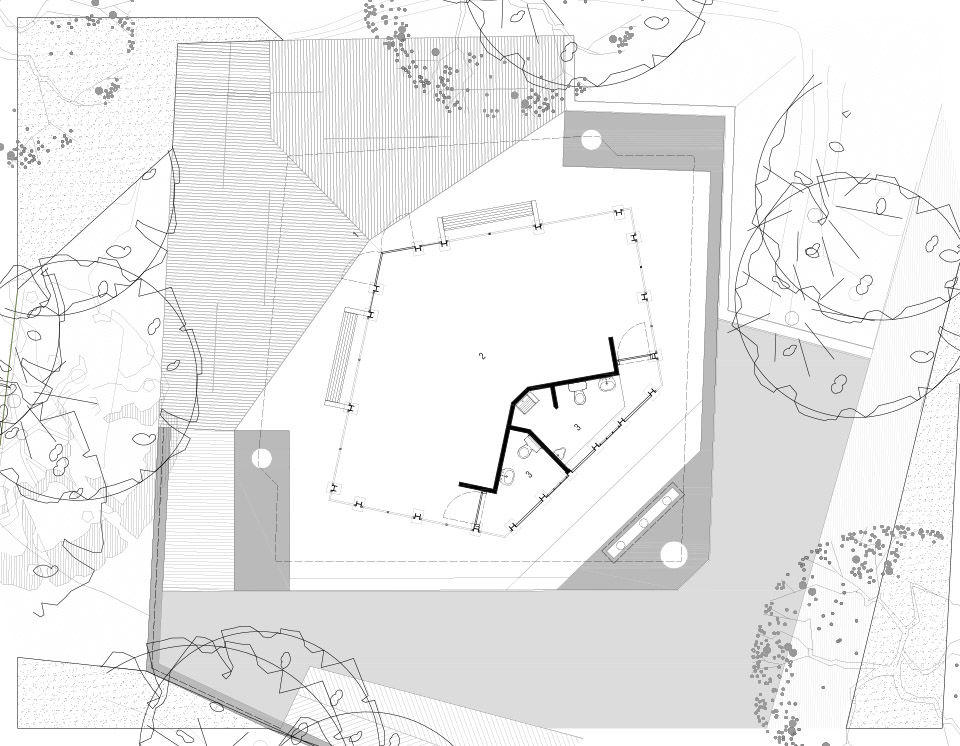
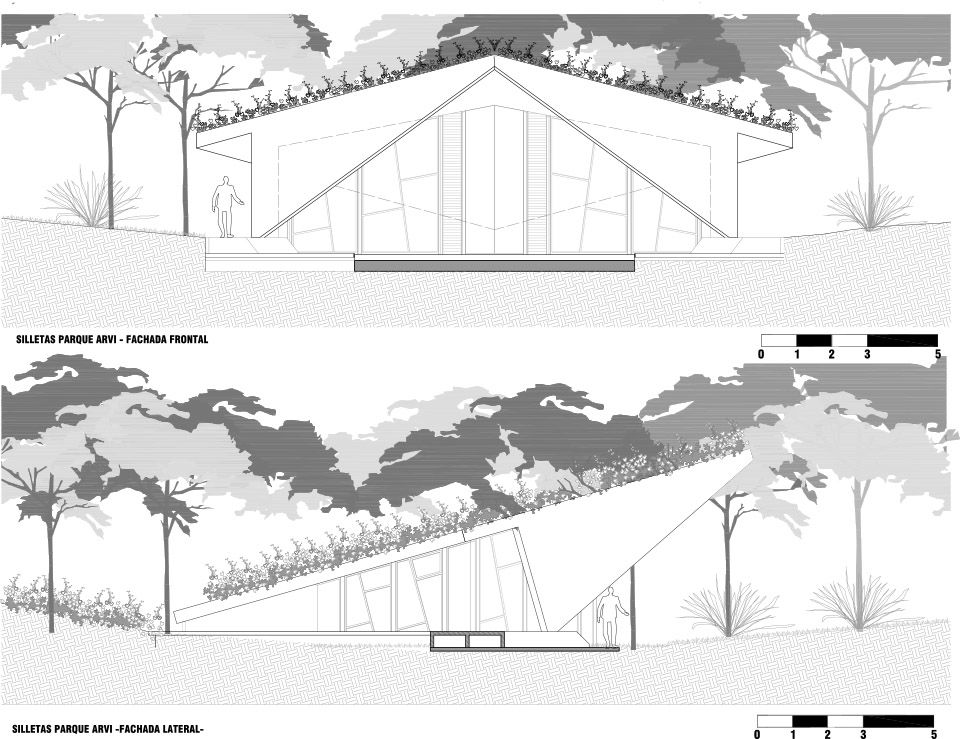
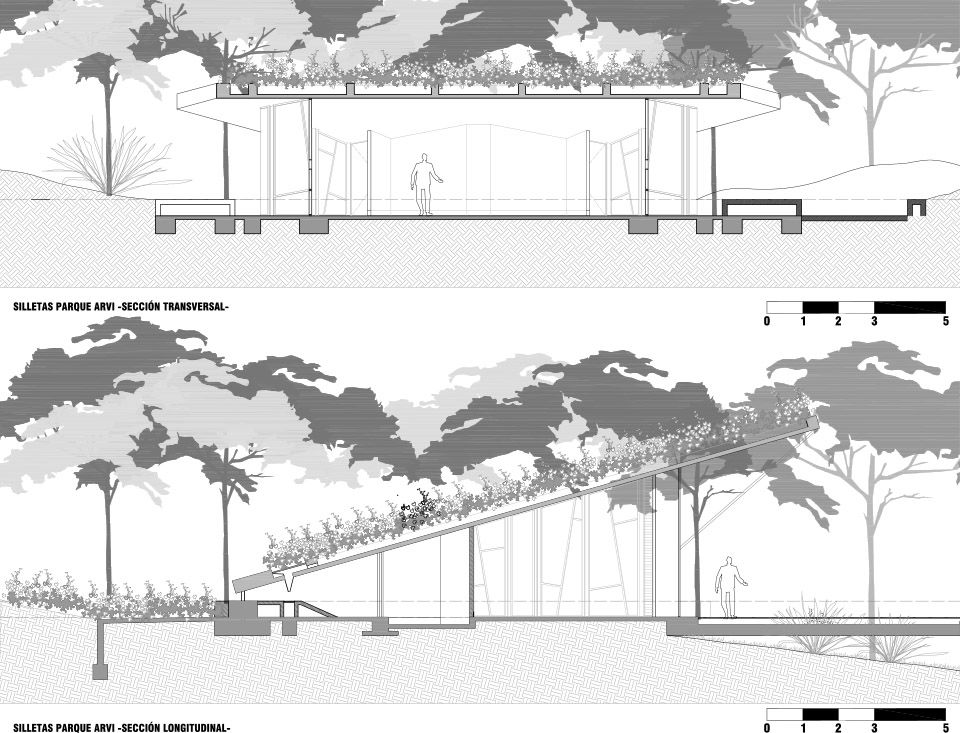
THE CENTIPEDE
“蜈蚣”轻轻地支撑在地形上。每个模块的四个混凝土柱使得建筑物可以悬停在地势的上方。根据不同的角度,这些模块被联接起来,引导这些建筑物随着土地的轮廓线起伏,或是越过一些地形。每一个“蜈蚣”模块的活动都因露台和木制阳台的存在而变得更加丰富,比如,可以在这些隐没在森林里的平台上发现风景。
绿色的屋顶给人一种建筑物已融合在了环境里的触动。

在“蜈蚣”上同样也有覆盖有土表,但这些土表上培育的大片的绿色是那些通常被归类为野草或普通牧草的品种。
这个部件实际上是由8到10个模块串联而成(每个模块有4只“脚”或是支柱伸向地面),贴合了土地的几何轮廓。从概念上来讲,这是一个适于居住的海拔。每一个100平方的模块的内部都可以调整来满足特殊的需要,永远允许人们在这里休养身心。这些“蜈蚣”通过组合13个覆盖几何形状,可以呈现多种的版本。这是一个开放性的结构配置,目的在于减少100%的土壤移除,避免它的湖上住宅的支撑物阻塞了径流和生物体的流动。
这个“蜈蚣”将包含有管理处、训练场所、商业会议厅、专为考古学家指定的消遣庇护所。
这个“蜈蚣”将会应用于斜坡的中部,高度适中。从上面的小路可以欣赏它的绿色的屋顶,从它前面较远的地方则可享受到它广阔而美丽的前景。
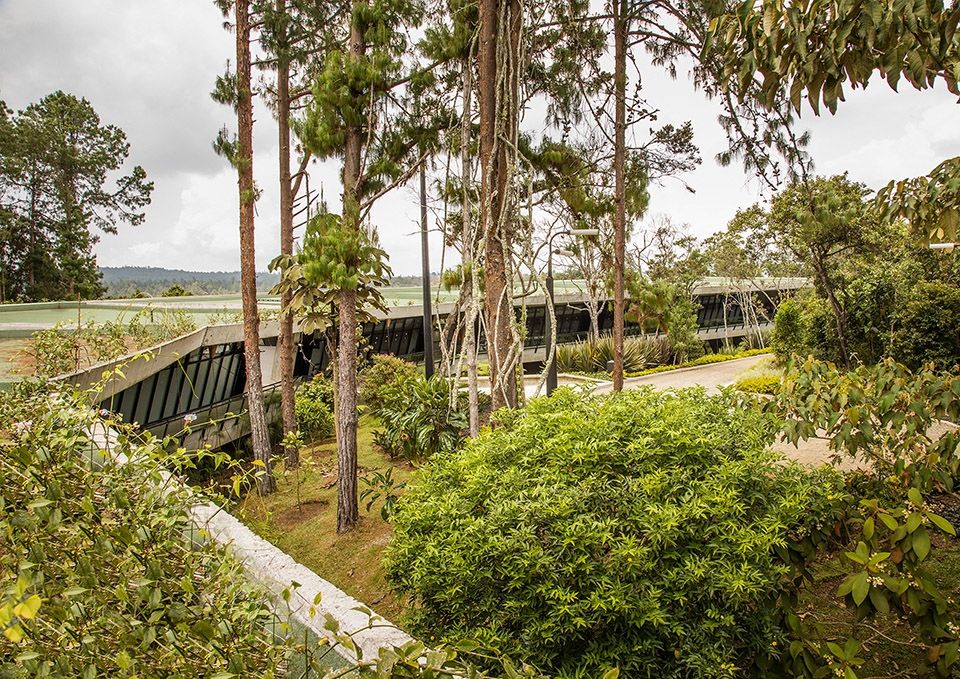
THE CENTIPEDE
The Centipede is lightly supported on the terrain. Four concrete columns per module allow the building to be suspended over the topography. The modules are coupled according to different angles and lead these horizontal constructions to follow the movement of the contour lines or to skip some landforms. Each Centipede module extends its activity on terraces and wooden balconies, which are platforms in the forest to discover the landscape. The green roof gives the sensation that the building is immersed in the environment.
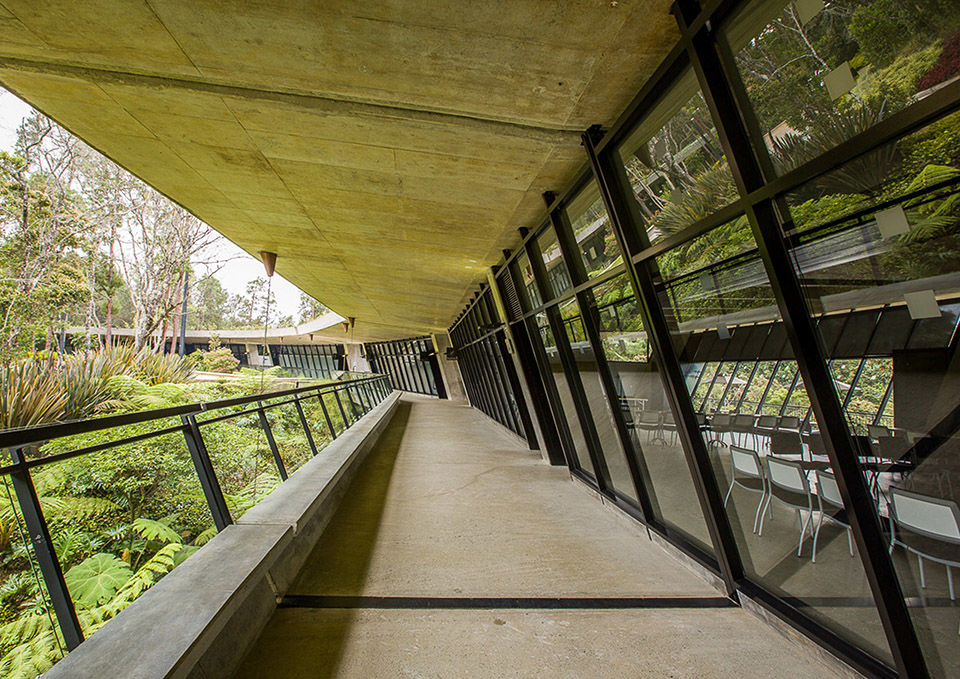
also has covers but in this case the green of extensive crops used to propagate species that are generally classified as weeds or common pastures.
This piece actually consists of the concatenation of eight to ten modules (each with four “legs” or supports to the field), enabling the geometric accommodation of the contours of the land. Conceptually this is an inhabited elevation Each 100 – square – module may be internally conditioned to the specific needs, in order to allow permanent adjustments. These centipedes can be foreshadowed in multiple versions through the combination of 13 cover geometries. This is an open – structure configuration, which aims to reduce 100% of the earth movements and avoid obstructing runoffs and the flows of living organisms with its palafitte support.
The centipede will house the administration and training programs, business meetings, directed recreation and shelter for archaeological specialists.
The centipedes will be implemented mid-slope at intermediate elevations, allowing the appreciation of the green roofs from the paths above and enjoy a distant vision of the beautiful scenery from its large lookouts.
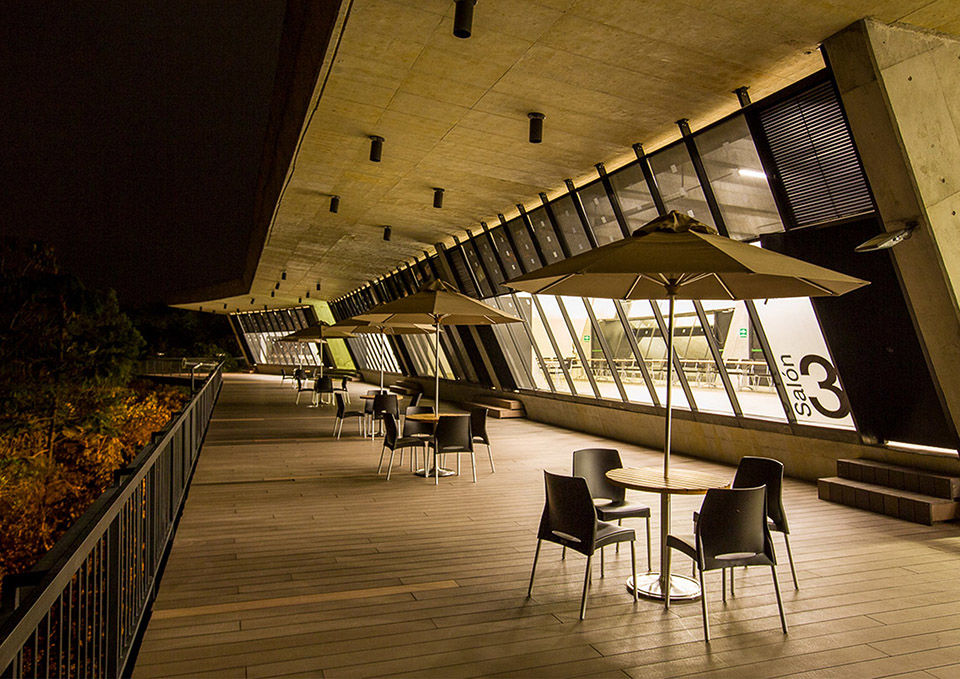


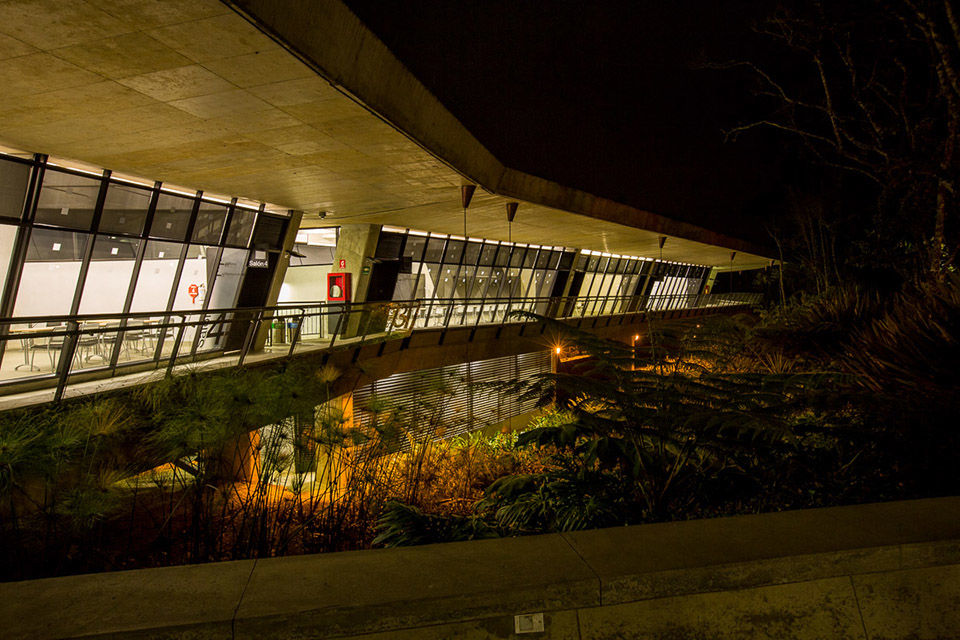


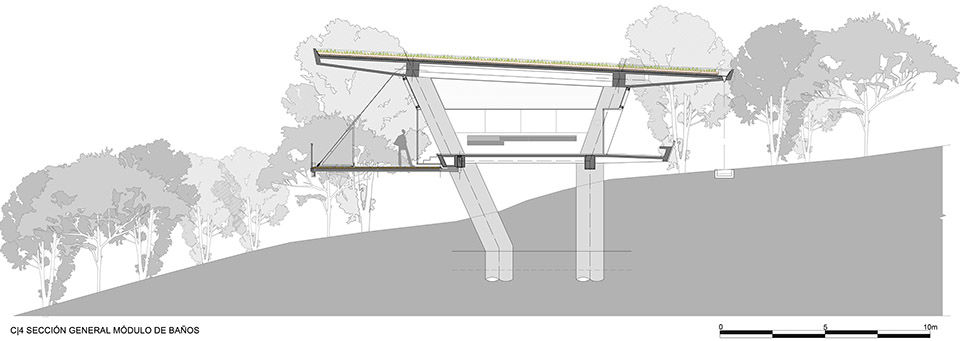
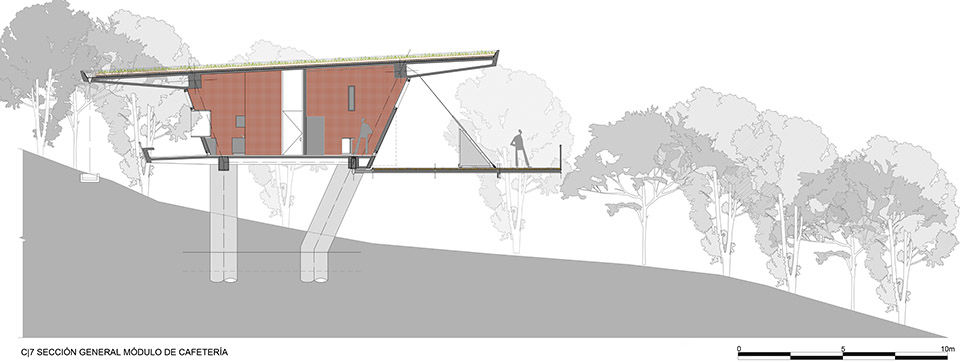

LA GUACA
Guacas的空间是出现在地面上的一个突起。Guacas是由起动态中央元素作用的混凝土六边形结构支撑的。每一个Guaca都展露了三个入口坡道,生动直接地和风景地貌相连,看上起就像地面上的线形裂缝。
Guacas住宅文化设计与艺术相关:展示了考古学物件或是考古事件,而听众席中则流传着类似的主题。这些Guacas足有6米高,在最高点处有闲置的空间,使得稍微复杂的活动或事件能够在建筑物周界内找到支持设施,包括那些特殊用途的场所:特别会议室、化妆室和技术室。
LA GUACA的目标在于把自身平衡在一个充满神秘的和异想天开的数据的文化方面中,推测这个Arví领土上的原住民的埋葬传统。这些地下结构停留在更为显著的山顶,延续了当地使用守护山作为天文台和必要的参考的传统。
因为这些大型的围墙都位于地下,所以不会对公园的自然环境造成负面的影响。这些人造的土丘将容纳文化类节目在这里举行,比如由复杂的科技设备营造的剧院、娱乐和交互空间,与周围的自然环境相比,着实是令人惊喜的“发现”。
它的外部也充当了进行天文观察的平台。
它的内部分成了多个节段,在不同的围墙内的规模不同,一系列的天窗确保了空间效应。
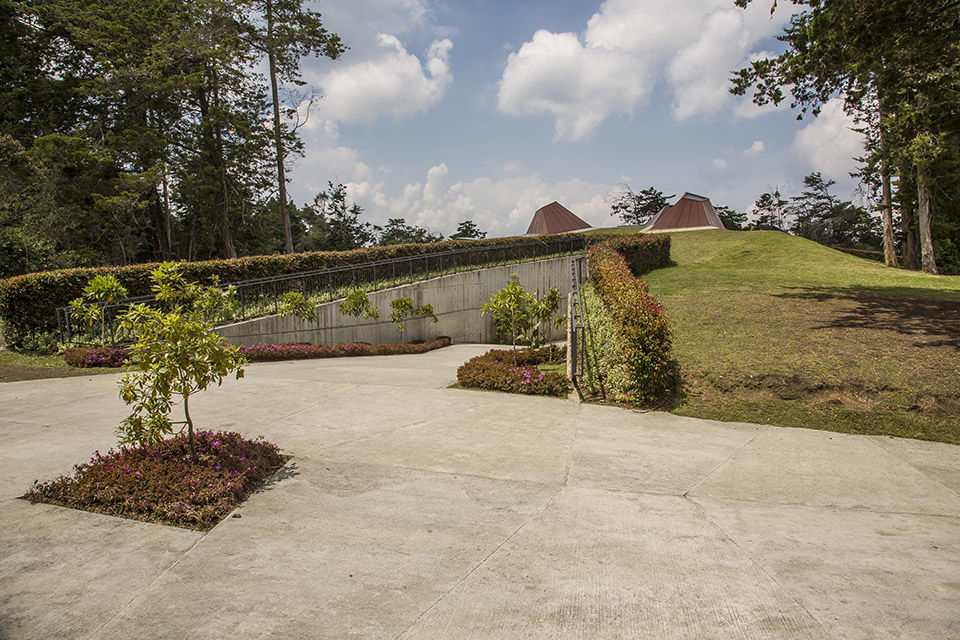
LA GUACA
The Guacas spatiality emerge as the ground is dug. The Guacas are supported by concrete hexagonal structured that operate as dynamic central elements. Each reveals three access ramps that are seen as linear cracks in the ground, establishing a direct and dramatic connection with the landscape.
The Guacas house cultural programming related to art: the exhibition of archaeological objects or events with similar themes to be carried out in auditoriums. Their height, six meters free at the highest point, allow somewhat complex activities or events that can find support in the perimeter areas of the building, including those with specific uses: restrooms, special meeting rooms, dressing rooms and technical rooms.
Aims to balance itself in one aspect of culture that is full of mystery and fantastic data, speculating about the tradition of burial, a practice of those who were the primitive inhabitants of this Arví territory. These underground structures rest on the more pronounced peaks and give continuity to the indigenous tradition of using the tutelary hills as observatories and essential references.
Because these large enclosures are underground they do not negatively impact the natural context of the park. These artificial mounds will house cultural programs such as theatres and recreational and interactive spaces based on complex technical devices to be offered as surprising “findings.”It will also serve on the outside as platforms to implement astronomic activities.
Its interior is rich in the sections that provide various scales in the different enclosures and a series of skylights that ensure spatial effects.

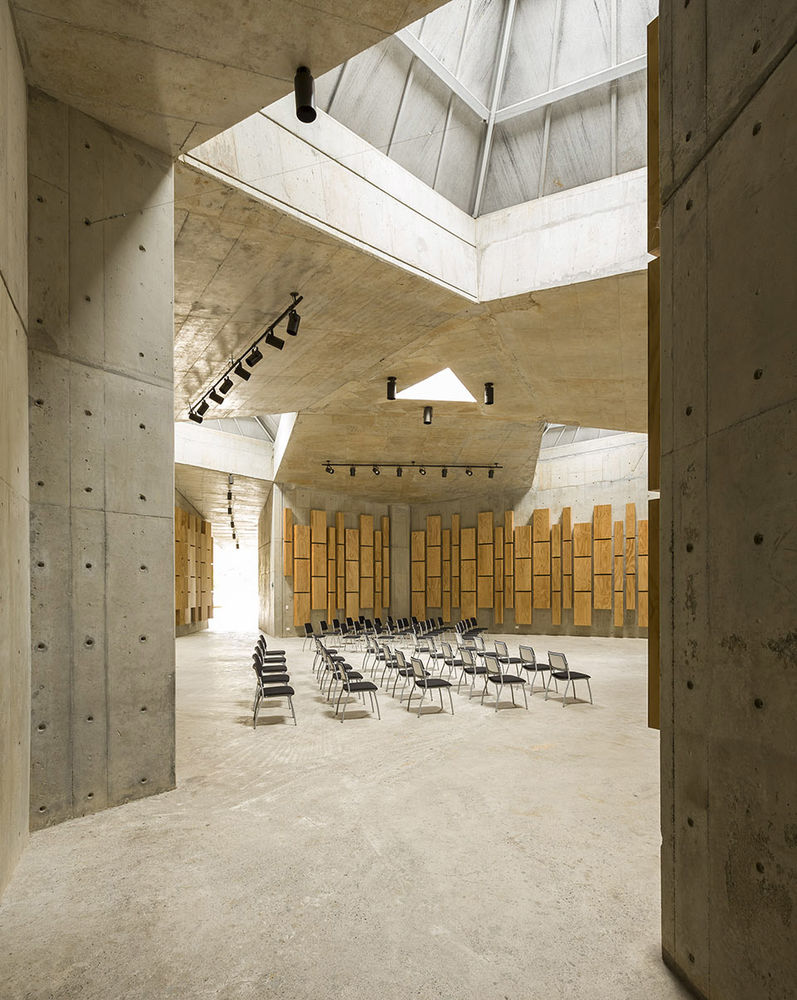
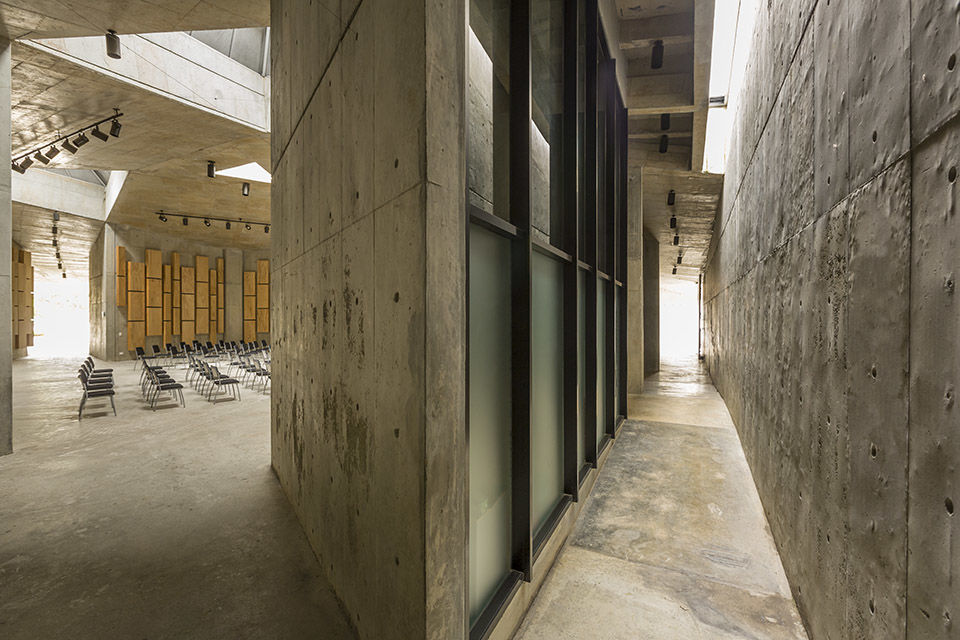
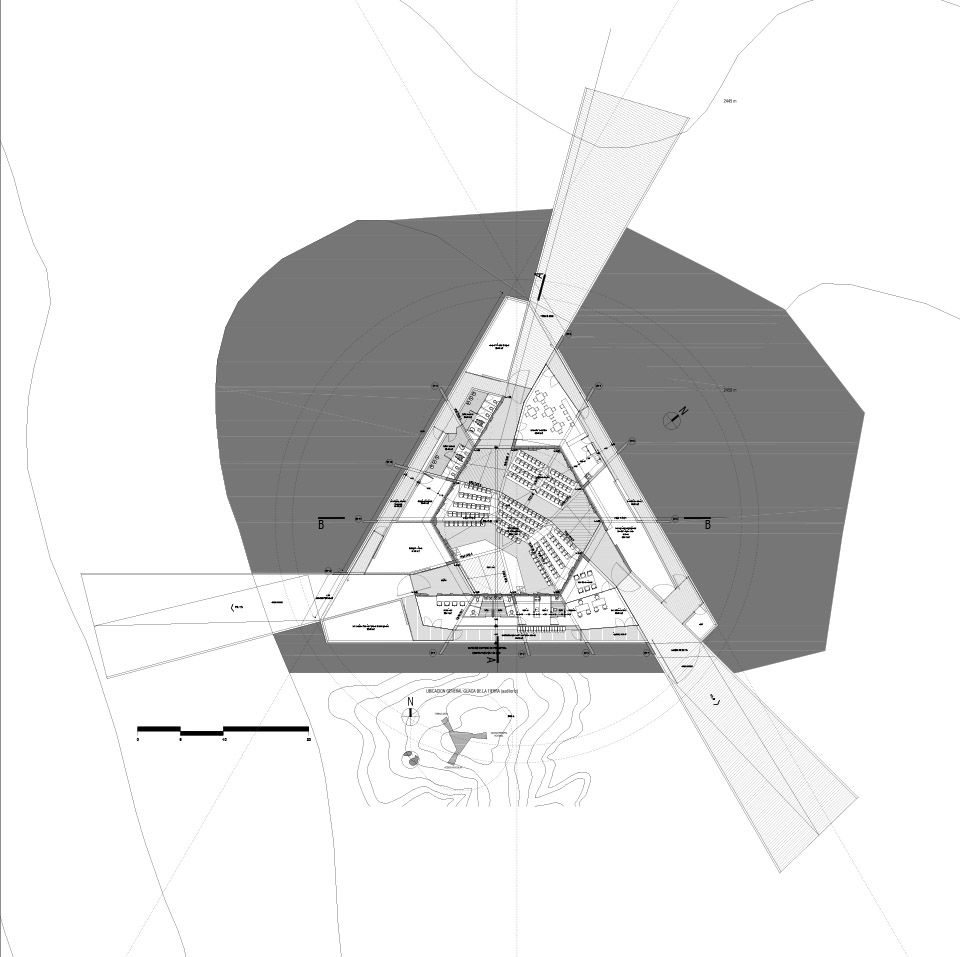

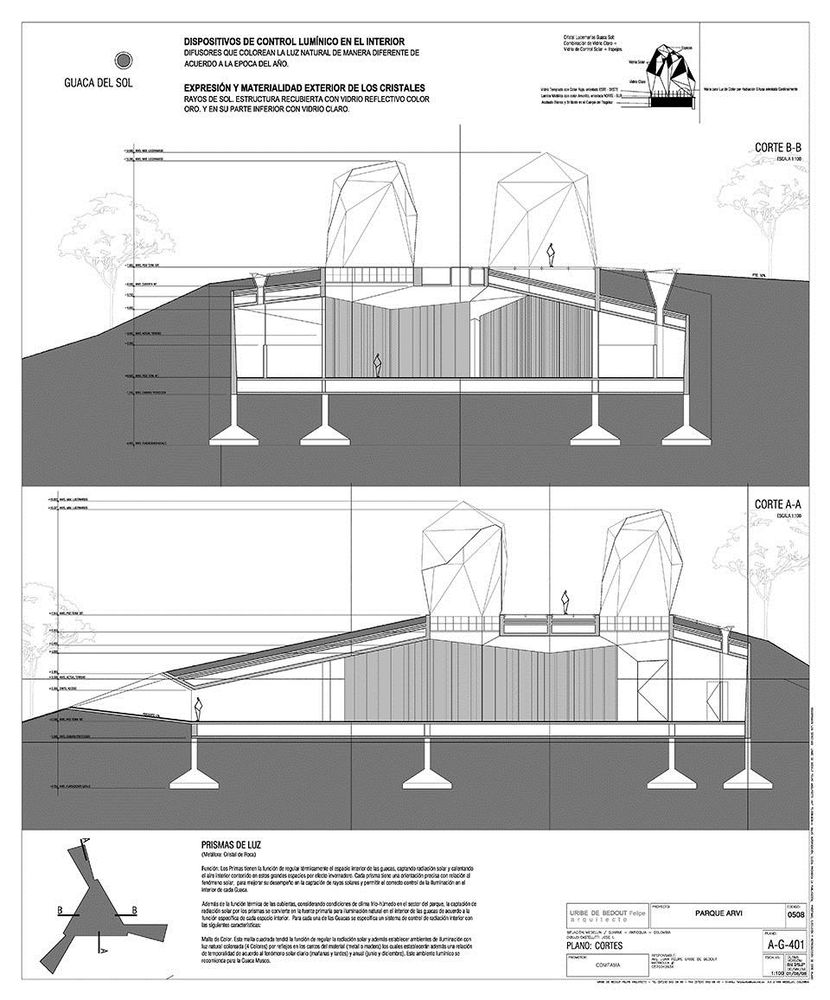
为了分配好这三个节点在整个公园表面的分布,设计了一个总体规划,指导早期阶段的建设,但这个总体规划是灵活的,允许后期的变动。这个计划受制于一系列的指令,以确保紧扣位置的概念,或是确保每个结构功能的实施,但决不要求限定结构的配置。这三个部件的建设总数是另一个有待时间决定的因素;然而,不变的原则是,领土内建筑物的密度不能威胁到确定的生态和考古学场址。每一个建筑都是以活动划分半径范围的;在一个建筑的半径范围变得清晰时,往往是因为邻近的建筑开始活动了。这是一个与输电杆塔相类似的结构,公园内所有的操作层都通过路线相互沟通。
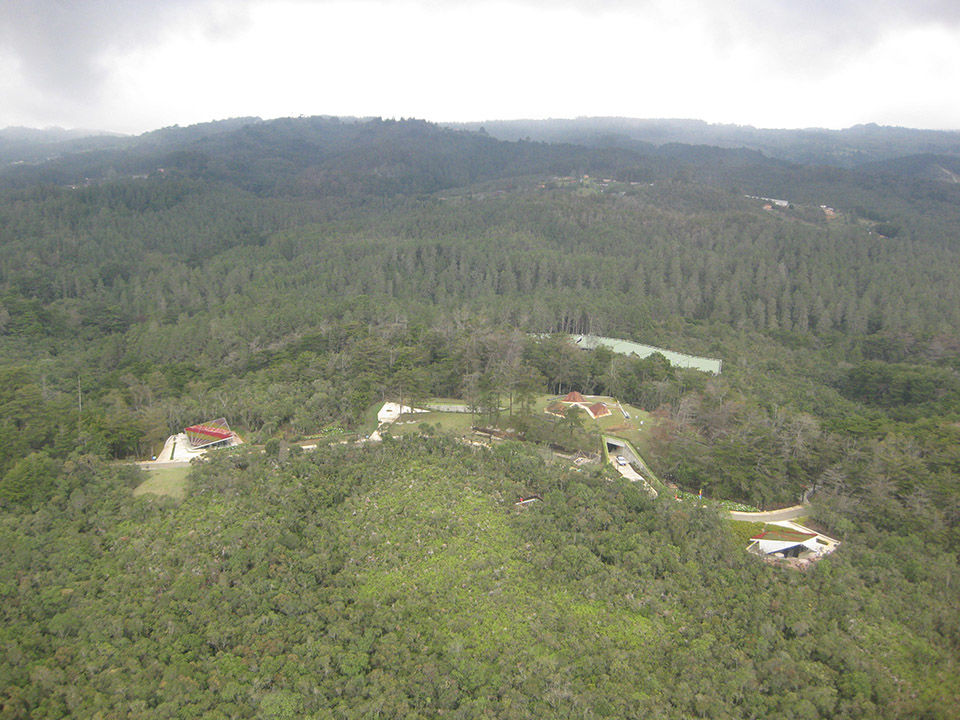
For the distribution of these three pieces or chess pieces on the entire surface of the park, a master plan was designed that will guide the early stages but has a condition of flexibility. The plan is governed by a set of instructions to ensure the relevance of the concept of location or implementation of each of the structures but that never requires a closed configuration. The sum of these parts is another factor that time will determine; however, what is stipulated as the unchangeable principle is the dissemination of the buildings throughout the territory to avoid concentrations that put the defined ecological and archaeological premises at risk. Each building creates a radius of activity; when the radius of a building becomes invisible, it is because the activity of the neighboring building has begun. It is a system similar to transmission towers, a system that follows the lines of communication to the park in all its operational layers.
客户:COMFAMA
费用:21,100.000美元
面积:92.600平方米
位置:哥伦比亚-麦德林-圣埃伦娜
LIENT: COMFAMACOST: 21,100.000 USDAREA: 92.600M2
UBICATION: SANTA ELENA- MEDELLIN- COLOMBIA
MORE:Juan Felipe Uribe de Bedout
更多请至:

